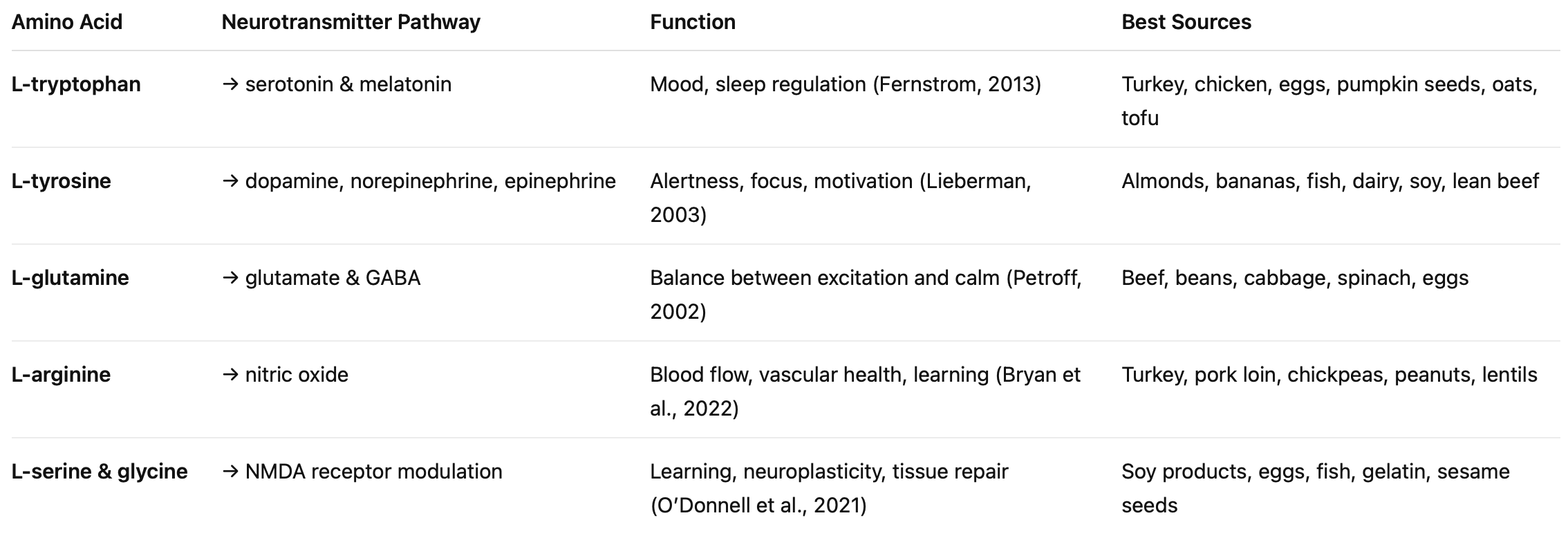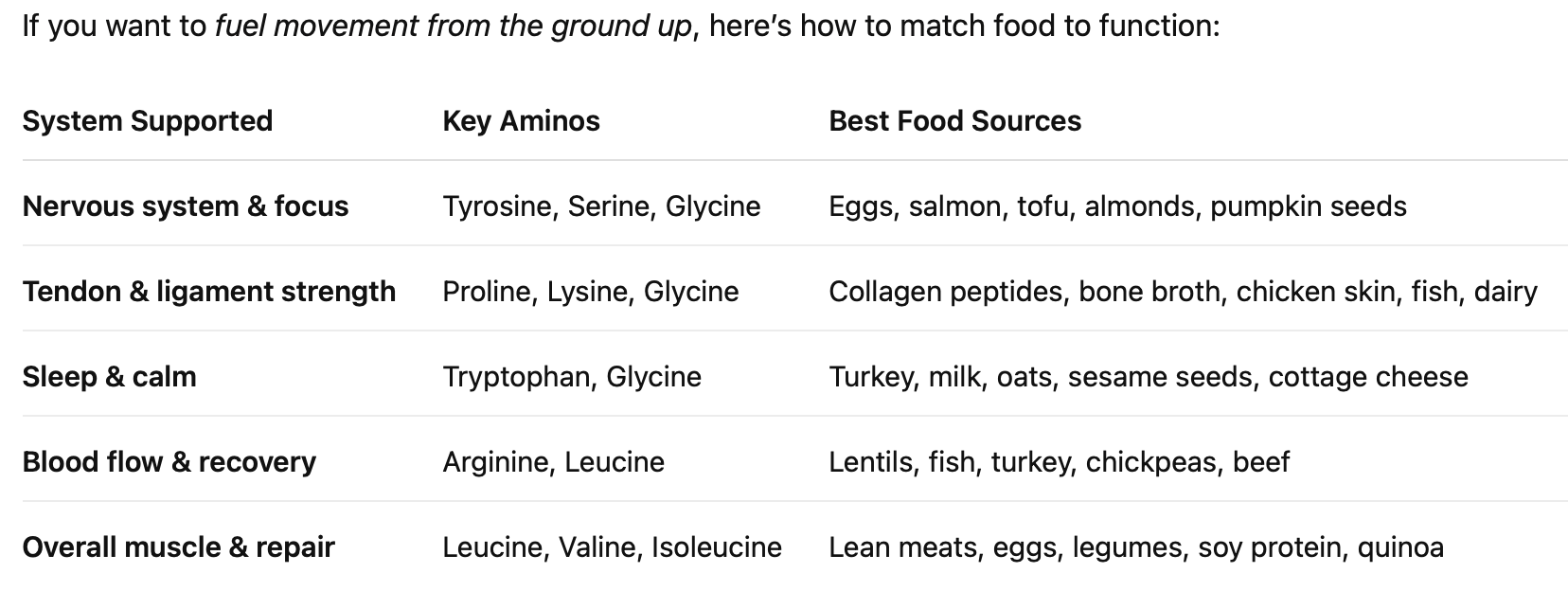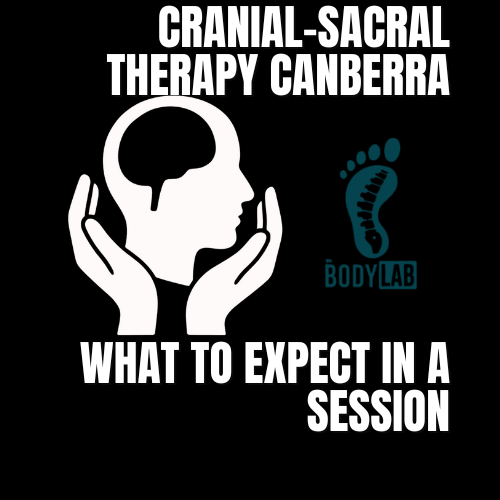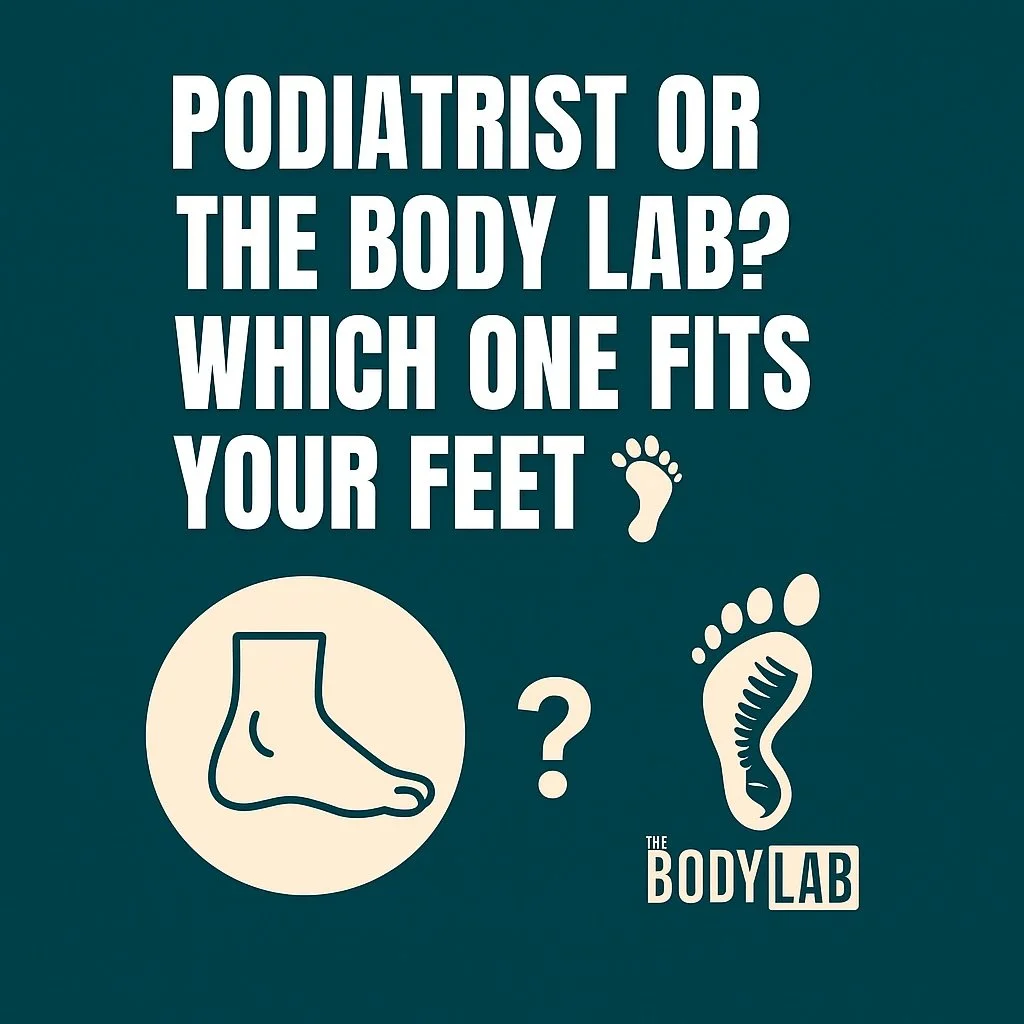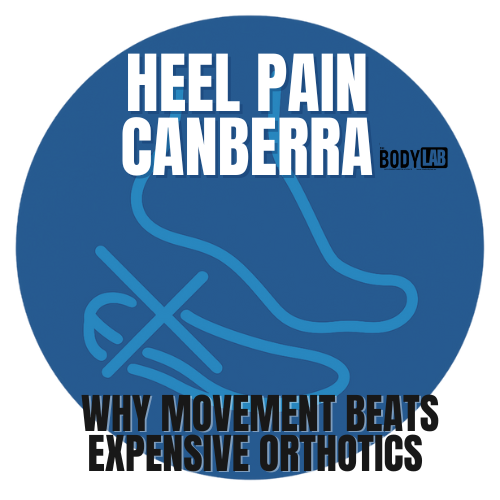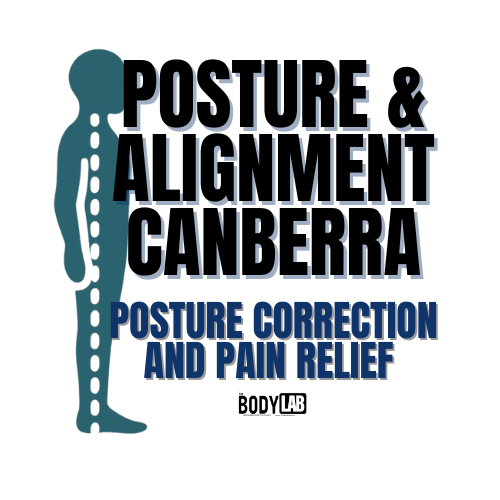Protein, Amino Acids & Your Brain
The Story Behind Movement, Mood, and Muscle
For decades, “protein” has been synonymous with muscle gain and gym culture — the stuff of shakes, powders, and “gains.”
But science (and The Body Lab) have always known: protein’s role goes far beyond biceps. It’s the backbone of every process in your body — from how you think and feel, to how you move and recover.
In short: protein is movement in molecular form.
The Old View vs. The Modern Science
The early narrative (1950s–1980s):
Protein was treated purely as a building block for muscle tissue. The focus was on nitrogen balance and preventing deficiency — not on performance, cognition, or cellular communication. The Recommended Dietary Allowance (RDA) of 0.8 g/kg/day was established for survival, not optimisation (Rand et al., 2003).
The paradigm shift (1990s–2010s):
Emerging neurochemistry research began linking amino acids to brain function and neurotransmitter synthesis(Wurtman & Wurtman, 1989; Fernstrom, 2013). Scientists discovered that specific amino acids like tryptophan, tyrosine, and glutamine directly influenced mood, alertness, and neural signalling.
The current view (2020s onwards):
We now understand that protein intake affects every major system — the nervous, immune, endocrine, and musculoskeletal networks (Tipton & Phillips, 2013; Smith et al., 2021).
It’s not just about eating enough; it’s about timing, quality, and context — how amino acids interact with movement, stress, and recovery.
So while old-school nutrition said, “Protein builds muscle,”
modern science says, “Protein builds function.”
Amino Acids: The Brain’s Wiring Kit
Your brain runs on amino acids. They’re the raw materials for neurotransmitters, the chemicals that allow nerves to communicate, thoughts to form, and movement to happen smoothly.
L-tryptophan → serotonin & melatonin → mood and sleep regulation (Fernstrom, 2013).
L-tyrosine → dopamine, norepinephrine, epinephrine → alertness and motivation (Lieberman, 2003).
L-glutamine → glutamate & GABA → excitation and inhibition balance — the yin-yang of nerve function (Petroff, 2002).
L-arginine → nitric oxide → blood flow and synaptic plasticity (Bryan et al., 2022).
L-serine & glycine → NMDA receptor modulation → learning and neural recovery (O’Donnell et al., 2021).
Historically, amino acids were seen as mere fuel for protein synthesis. But we now know they’re also neuro-nutrients — influencing brain chemistry and nerve health in real time.
Protein, Nerves & Movement
At The Body Lab, we see this in action every day.
When your nervous system is under-fuelled, movement patterns degrade: coordination drops, reaction time slows, and recovery lags.
Protein doesn’t just repair muscle; it:
Supports nerve function through amino acids like glycine and serine that stabilise synaptic signalling.
Enhances tendon and ligament integrity via collagen-forming aminos (proline, lysine).
Regulates hormonal and inflammatory balance, supporting stress recovery and tissue repair (Layman et al., 2015).
In clinical movement therapy, we say:
“You can’t retrain motion if the chemistry isn’t ready to respond.”
That’s why our programs always begin with the nervous system — because biochemical readiness determines biomechanical freedom.
Protein Intake: The Evidence Gap Closes
For years, the RDA of 0.8 g/kg/day was considered sufficient. Yet studies from the 2000s onwards revealed that this figure only prevents deficiency — not optimal function (Phillips et al., 2016).
Athletes, older adults, and anyone undergoing rehabilitation benefit more from 1.2–1.6 g/kg/day, sometimes up to 2.0 g/kg/day for strength and metabolic health (Morton et al., 2018).
Current research highlights:
Distribution matters: spreading protein evenly across meals boosts synthesis more effectively than one large intake (Mamerow et al., 2014).
Leucine threshold: ~3 g of leucine per meal triggers maximal muscle protein synthesis (Devries et al., 2018).
Quality counts: plant-based proteins can meet needs if combined strategically (Young & Pellett, 1994).
In short — we’ve evolved from “get enough protein” to “get it right.”
The Takeaway
The conversation around protein has matured — from bulk to brain, from muscle to movement.
Old science built bodies; new science builds functioning humans.
At The Body Lab, we blend this understanding into every session:
calm the nerves, train the movement, fuel the recovery.
You’re not just what you eat — you’re how your body uses what you eat.
Protein isn’t just food. It’s communication.
References
Bryan, N.S., Tribble, G. and Angelov, N., 2022. Oral microbiome and nitric oxide: the missing link in the management of blood pressure. Journal of the American Heart Association, 11(3), e024792.
Devries, M.C. and Phillips, S.M., 2018. Supplemental protein in support of muscle mass and health: advantage whey. Journal of Food Science, 83(1), pp.8-16.
Fernstrom, J.D., 2013. Large neutral amino acids: dietary effects on brain neurochemistry and function. Amino Acids, 45(3), pp.419–430.
Layman, D.K., Anthony, T.G., Rasmussen, B.B., Adams, S.H., Lynch, C.J. and Brinkworth, G.D., 2015. Defining meal requirements for protein to optimize metabolic roles. Clinical Nutrition, 34(3), pp.419–425.
Lieberman, H.R., 2003. Nutrition, brain function and cognitive performance. Appetite, 40(3), pp.245–254.
Mamerow, M.M. et al., 2014. Dietary protein distribution positively influences 24-h muscle protein synthesis in healthy adults. Journal of Nutrition, 144(6), pp.876–880.
Morton, R.W. et al., 2018. A systematic review, meta-analysis and meta-regression of the effect of protein supplementation on resistance training–induced gains in muscle mass and strength. British Journal of Sports Medicine, 52(6), pp.376–384.
O’Donnell, J., Zeppenfeld, D., McConnell, E., Pena, S. and Nedergaard, M., 2021. Norepinephrine: A neuromodulator that boosts the function of diverse brain circuits. Frontiers in Neural Circuits, 15, 647074.
Petroff, O.A.C., 2002. GABA and glutamate in the human brain. Neuroscientist, 8(6), pp.562–573.
Phillips, S.M., Chevalier, S. and Leidy, H.J., 2016. Protein “requirements” beyond the RDA: implications for optimizing health. Applied Physiology, Nutrition, and Metabolism, 41(5), pp.565–572.
Rand, W.M., Pellett, P.L. and Young, V.R., 2003. Meta-analysis of nitrogen balance studies for estimating protein requirements in healthy adults. American Journal of Clinical Nutrition, 77(1), pp.109–127.
Smith, A.E., Moore, C.T., and Dodd, S., 2021. Amino acids and the central nervous system: the role of neurotransmission and metabolism. Frontiers in Neuroscience, 15, 654280.
Tipton, K.D. and Phillips, S.M., 2013. Dietary protein for muscle hypertrophy. Nestlé Nutrition Institute Workshop Series, 76, pp.73–84.
Wurtman, R.J. and Wurtman, J.J., 1989. Brain serotonin, carbohydrate-craving, obesity and depression. Obesity Research, 6(S4), pp.477–480.
Young, V.R. and Pellett, P.L., 1994. Plant proteins in relation to human protein and amino acid nutrition. American Journal of Clinical Nutrition, 59(5 Suppl), pp.1203S–1212S.

